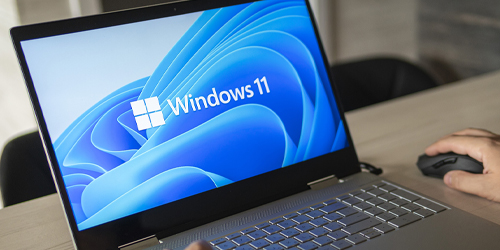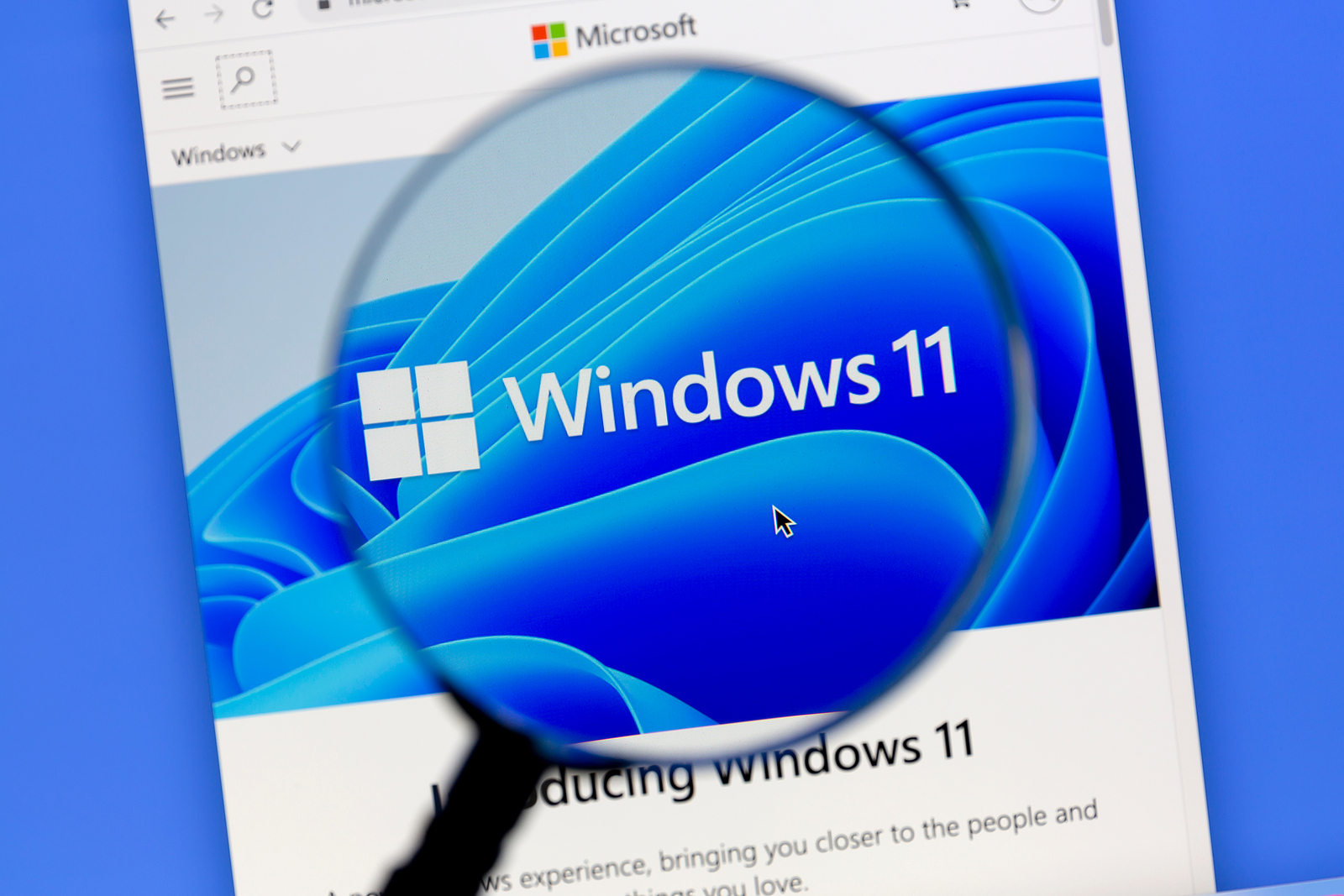
Windows 11 is the newest iteration of Microsoft’s operating system (OS). And while the update is hitting newer devices first, it’ll likely roll out to all Windows-compatible devices by mid-2022.
That’s not to say that the switch to Windows 11 is compulsory. It’s not, at least not yet. Microsoft has, in fact, pledged to support Windows 10 until 2025.
If, however, you want to leap by joining the Windows 11 bandwagon, you’ll notice a redesigned taskbar, rounded corners on apps, and other slick redesigns.
Underneath, Windows 11 is “largely” the same operating system you have come to know and love. But there are new features designed to improve the operating system. And here are tips and tricks to make the most out of them.

Getting things done with “Focus Sessions.”
With email, video chats, and other notifications popping up during work hours: you can easily get distracted.
“Focus Sessions,” a feature in the new OS, steps in to help set what notifications to see during work hours while redirecting the rest to your action center.
It’s available in the Alarms & Clock app and provides a reliable way to get 30 or more minutes of deep focus. If your work session extends more than 45 minutes, the Alarm & Clock app will schedule a 5-minute break halfway through.
To set up Focus Sessions, go to Settings > System > Focus assist. And select one of the three available options:
- Off(to get all pop-ups and notifications from your contacts and applications)
- Priority only(to see only the authorized alerts from a customized priority list during work hours)
- Alarmsonly (to hide all but alarm notifications).
7 ways to take a screenshot
Suppose you want to capture a section of the file you’re working on to seek clarification from a colleague. Or a noteworthy gaming feat to brag to your friends. Whatever the case: Windows 11 got you covered with multiple ways to take a screenshot.
Here’s a quick overview of the same.
Snip & Sketch
The Snip & Sketch tool makes it easier to access, annotate, and share screenshots than the good ‘ol Snipping Tool.
You can access the feature using the shortcut: Windows key + Shift + S.
Where the said keyboard shortcut will dim the target screen and open a small menu at the top, allowing you to select the preferred screenshot type. That could be a free-form, rectangular, window, or full-screen snip.
The captured screenshot is copied to your clipboard and pops up momentarily in the lower-right corner of the screen. If you miss the pop-up, you can find the alert in the notification panel. Click on the notification to open the shot in the Snip & Sketch app – from where you can save, annotate, or share the screenshot.
You can also access the screenshot app from the Start button or the notification panel (as a Screen snip). (Protip: Use the search bar or pin it to the taskbar for easy and quick access.)
Accessing the Snip & Sketch app from the Start menu opens the “snipping” window instead of the mentioned small panel. As such, you need to tap or click on the New button to i. initiate capture and ii. open the small menu – to specify the type of screenshot to be taken. (That may feel like a lot of work, but this method is ideal when looking to delay the capture by a few seconds.)
Snipping tool
The Snipping Tool has been present since “time immemorial.” And despite Microsoft warnings about the tool moving away, it’s still kicking in Windows 11. Sure, the tool is delisted from the Start menu. But you access it via search.
Once you have opened the tool, click the New button to kickstart the snipping process. The default screenshot type is rectangular. But you customize it to full-screen, window, or free-form.
Keep in mind: While the tool automatically copies your snips to the clipboard, it doesn’t automatically save them. Thus, manually save your shots before exiting the app.
Print Screen
Print Screen is another go-to snipping tool when needing to capture the entire screen. And to leverage it: You only need to click on or tap the Print Screen (could be labeled PrtScn) button.
The Print screen command only copies the snip to the clipboard but does not save it as a file. As such: Open Microsoft Paint or another image editing app, paste the snip, and save the file from the app.
To ease the snipping process: Set the PrtScn key to open the Snip & Sketch tool. (By heading to Settings > Ease of Access > Keyboard and toggling Use the PrtScn key “on” to open screenshot under Print Screen Shortcut.
Windows key + Print Screen
If looking to capture the whole screen and automatically save the snip, use the Windows key + Print Screen key command. (Easily access the resulting image in the Pictures > Screenshots folder.)
Alt + Print Screen
Alt + PrtScn command is an easy way of snipping an active window.
The resulting screenshot is copied to the clipboard, but you’ll need to open it in a photo editor to annotate, save, or share the same.
Game bar
Another snipping tool in you arsenal is the Game bar.
Here: Click the Windows key + G key to call it up. Then hit the screenshot button or leverage the default Windows key + Alt + PrtScn keyboard shortcut to get a full-screen shot.
Windows Logo + Volume Down
When using a Microsoft Surface device: You can leverage the “physical” buttons to snap the entire screen.
Press the Windows Logo touch button and click the volume-down button on the side of your device. (The screen should dim briefly to denote a successful snip. After which, you can access the image in the Pictures > Screenshots folder.)
Start Button placement
The first thing you’ll probably notice is the Start Button’s unusual placement. While you’re used to it being at the lower-left corner of your screen, in Windows 11: it’s centered with other icons on the taskbar.
Not to worry, though: Changing it back is easy.
- Right-click on any empty section of the taskbar.
- Open Taskbar Settings
- Select Taskbar Behaviors
- Drop-down and change the Taskbar alignment to Left
With that: All the taskbar icons will move to the Left, putting the Start button in its usual corner.
Desktop management
Windows 11 brings with it the end of getting lost in a sea of open windows.
The new OS boasts a redesigned Task view icon that lets you create, manage, and toggle between multiple desktops. Imagine creating a different desktop for work, gaming, or personal stuff; and accessing each with ease.
And you can. Tap the desktop icon on the taskbar to open a panel featuring your current desktop. Click the + button to create a new desktop or X button to remove an existing one.
To easily switch between them: hold the Windows + Ctrl keys and click the right or left arrow key. (You can also rearrange the virtual desktops as per your preference and drag apps from one desktop to another.)
Pairing Bluetooth devices
Yes, you haven’t seen enough of Windows 11 goodies yet.
Its new and improved Settings app makes pairing Bluetooth devices easy and accessible. To add a Bluetooth device, for instance, just:
- Search for Settings app in the Start menu
- Hit the Best match to open the Settings app
- Select Bluetooth & devices, and toggle the Bluetooth options to “on.”
- Next, turn on your Bluetooth device and hit the Add device button
- Select the Bluetooth device to be paired with your PC – it could be a smartphone, microphone, speaker, etc. And click on its name to connect it to your computer.
- Upon receiving a confirmation message, click Done to complete the process.
To remove a device from Windows 11, head to Settings > Bluetooth & devices > Devices. Once there, find the target device, click on the (…) menu, and select Remove or Disconnect as deemed necessary.
To share files:
- Head to Settings > Bluetooth & devices
- Turn on Bluetooth (on both devices) to make them visible
- Tap on View more devices
- Scroll down to Send and receive files via Bluetooth
- And follow the prompts of the File Transfer wizard to complete the file sharing process.
(Consider pinning the Bluetooth icon on the Quick Settings bar if using it frequently. I.e., next to Wi-Fi, battery, and speaker settings buttons.)
Pin App to the start menu
Windows 11 has done away with tiles. In their stead is a simple Start menu where you can pin programs and apps for easy access.
To do so:
- Open the App List
- Right-click on the target app
- Select Pin to Taskbar or Pin to Start depending on your preference
- And arrange or drag the app to the desired position.
Note the “position” of the pinned program to ease its access using the Windows key + [Number key] keyboard shortcut. (Here, the [key number] denotes the app’s position on the taskbar. E.g., Windows key + 3 will launch the program in the third position.)
Unpinning an app is also easy: Right-click on the target app and select Unpin from Start.
Changing Default apps
While Windows 11 has made some tasks easy, it has made others a tad challenging.
One such task is changing the default app, as you have to specify a default program for every file type.
- Search for the Settings app on the Start menu
- Open the app
- Click on the Apps section
- Select Default apps
- And tap on the program you want to set as the default app for a given file type.
- (A list of all the file types the program can handle will appear)
- Click on the desired file type, and select the app from the resulting pop-up menu
Managing Widgets
Like its Windows 10 counterpart, the new OS adds widgets to its interface. I.e., an AI-powered customizable feed that pops or slides out to show info, such as news, stock prices, sports scores, weather, nearby traffic, to-do lists, etc.
You can access the Widgets button on the redesigned taskbar. After which, you only need to tap or click on it to display the widgets panel.
To customize your widget feed: click or tap the button adjacent to your profile photo (to the upper-right). Next, tap or click on the Plus button next to a widget preview to add it to the display. Or the X button to remove an unwanted widget from the feed.
To hide the widgets: Right-click on the taskbar and select Taskbar Settings. Next, toggle the Widgets from on to off.
Multi-Task layout
When it comes to multi-tasking: Picture instances where you have several programs running or multiple instances of Microsoft Explorer open: Windows 11 has you covered.
Instead of just dragging and dropping a window into place, the new OS lets you arrange and save multiple windows in different layouts on your screen. (All thanks to Snap Layouts.)
To leverage the Snap Layout feature: Open a window and locate a square-like button between the minimize and the X button. Hover over the button to locate a pop-up menu displaying different layout options for the window. Next, select a layout and highlight the position (within it) where you’ll place the window in question.
Repeat the process for all the windows you want to group, and once done, save them in Snap Layouts. Then on, you can leverage Snap Groups to minimize or maximize the entire bunch.
The tips and tricks are endless and go to show: Windows 11 has undergone a significant redesign for the better. The improved Settings app, enhanced desktop management, and boosted multi-task layouts are a testament. And they all work together to improve accessibility, boost productivity, and deliver a fluid next-gen user interface.
